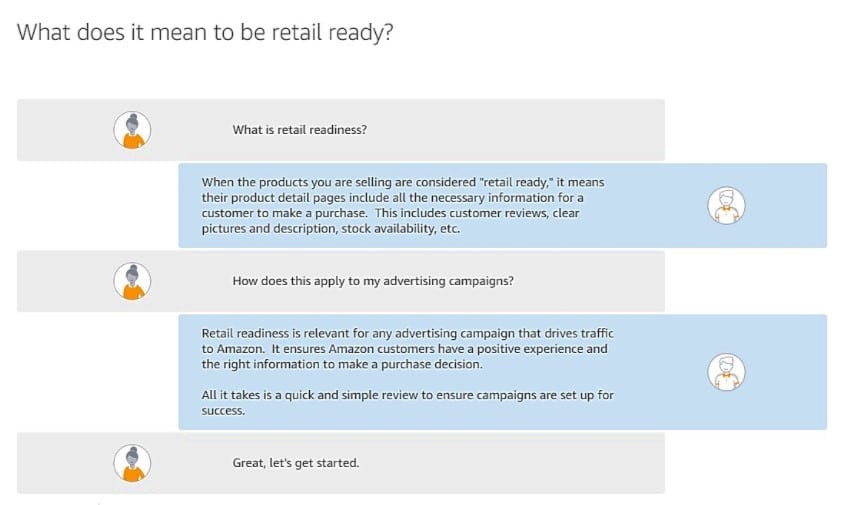You’re ready to start advertising on Amazon, make sure your product detail pages are ready too. Follow along through this 3-part series to get the most out of the advertising dollars you’re about to spend. Your ads do the work of getting people to your product detail pages, but your page needs to do the work of ‘selling’ your product. Is it up to the task?
First, let’s look at why your products need to be optimized for Amazon. Long gone are the days where a product name, one image, and a few descriptive words were enough for an e-commerce site.
As online shopping continues to grow, more customers are using Amazon to research, price compare, and purchase products. With this shift in consumer behavior, Amazon vendors and sellers need to put just as much care into how their products appear on Amazon as they would into how a product appears on a retail shelf — this is known as being “retail ready.”

Q: Why is retail readiness important?
A: The answer to this question has four parts:
1. Shopper Confidence: Customers should be able to find all the answers they need to purchase your product on your product detail page. If they cannot, they are more likely to click away from your item to another product.
When shopping online, as opposed to purchasing in a store, the customer does not have the opportunity to touch and feel your product before they decide to buy. It is your job as an internet seller to cover this gap for the customer by giving as much high-quality detail as possible to overcome the lack of a physical product in the customer’s hands.
2. Organic Search: Amazon utilizes its own search engine called A9, and if you have ever searched a product on Amazon’s site, you have used this engine. The Amazon search algorithm uses many data points about a product to determine its ranking on the results page.
One of these data points is the quality of content on the product detail page. Amazon uses the content on your product (the title, bullet points, and description) to determine relevance to a customer’s search. Optimize your Amazon product detail page for consumers and for Amazon’s search algorithm.
For example: if you are selling a rubber ball and do not have the phrase “rubber ball” listed in the title, bullet points, or description, your product will not organically rank high when a customer searches for “rubber ball.”
3. Ad Placement: Product content impacts Amazon advertising efforts drastically. Not only does Amazon rely on the product detail page content to determine the organic ranking, but it is also used to determine paid placement ranking when advertising.
The way this is utilized varies based on the campaign targeting type. If your campaigns use the automatic targeting option, Amazon takes all terms on your product detail page and applies them as a baseline to target your ad.
Going back to the rubber ball example: if “rubber ball” does not appear in any of the content, automatic targeted ads will not be triggered to show when a customer searches “rubber ball.” This means that you need “rubber ball” in both the content and the keywords to increase the relevancy of the ad.
Amazon also uses product content for manually targeted ads. These types of campaigns require you to enter specific keywords that supersede the content, in most cases. The content still has an impact, but with a manual campaign, Amazon has more than one source to pull from for targeting.
4. Content Display: In order to give customers the most complete information, Amazon uses a mingled content system that selects details from multiple contributors (sellers, vendors, and Amazon staff). This means that your content may not always be the content that is shown on Amazon if you don’t control the brand or aren’t the first seller to list the product. The better your content is, the more likely it is to be shown if there is more than one seller on a particular product.
When managing product content on Amazon, update it as frequently as you do the content on your website. Keeping your information fresh and up to date gives your product the best chance of success on Amazon. Our next post will dive into how to create Amazon product pages that shoppers will love.



